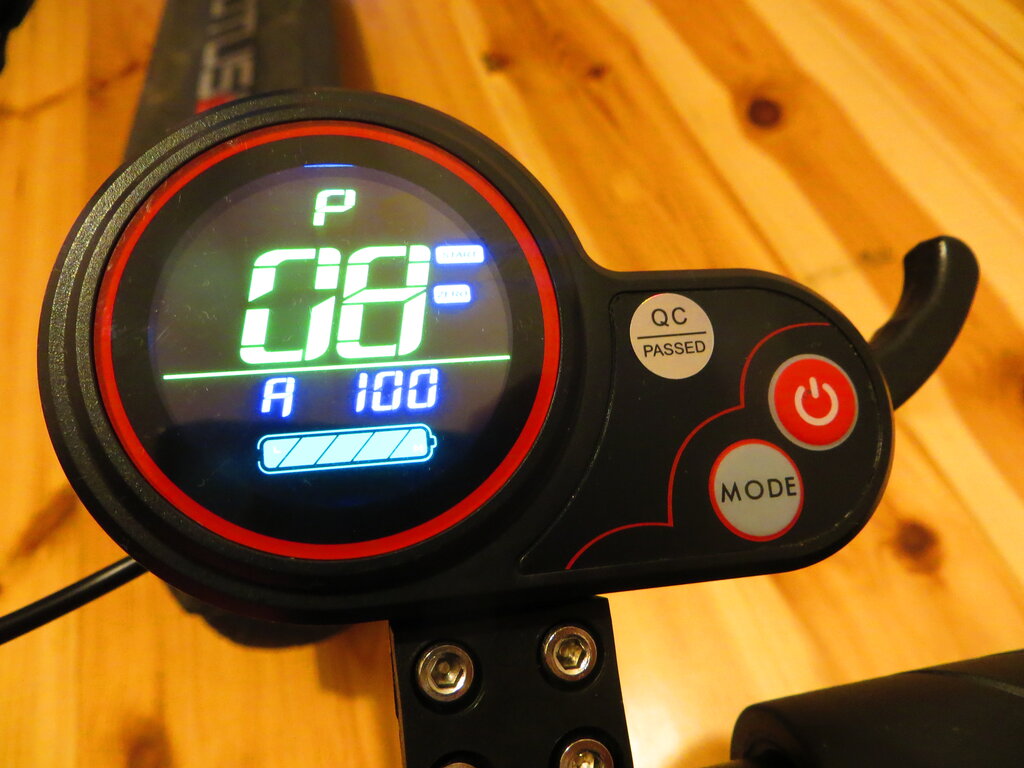
I got myself a Motus Pro 8.5 Lite electric scooter. It’s the most fun I’ve had in ages.
I’ve been shopping for a light scooter that I would be able to take with me on a train or bus, or load under a shopping cart. I’ve not fully succeeded as this one weights 17.5 kg, but with a bag I’ve been able to take it on a train with me. The lighter models had a 100 kg weight limit, and that’s around how much I weight. Take a backpack and you’re over the limit. My Motus has a 120kg limit (even though the instruction manual says not to put weight over 100kg on it - weird to learn this after buying).
When I bought it, it wasn’t too fast, I wanted to return it because it barely reached 15 km/h. I learned they had to lock this scooter because of some lawyer bullshit, but the friendly warranty tech sent me an easy way to change the power to 100%. The trick is to hold Power and Mode buttons together, then - when the display changes - press Power until you see “P08” on the upper display, and press (or hold) Mode until you see “100” on the bottom display.

After unlocking, I’ve been able to go faster than 30 km/h which is great, I rarely go that fast. With 350W of power, the scooter isn’t starting too quickly, but I very rarely have to use my legs.
You will find all settings in the service mode settings table.
The nice thing for carrying this scooter is that its handles are foldable. We’ll see if I’m still going to be happy about this in two years when it will get wobbly. It looks like on the picture below - the red rings can be screwed to reveal the mechanism.
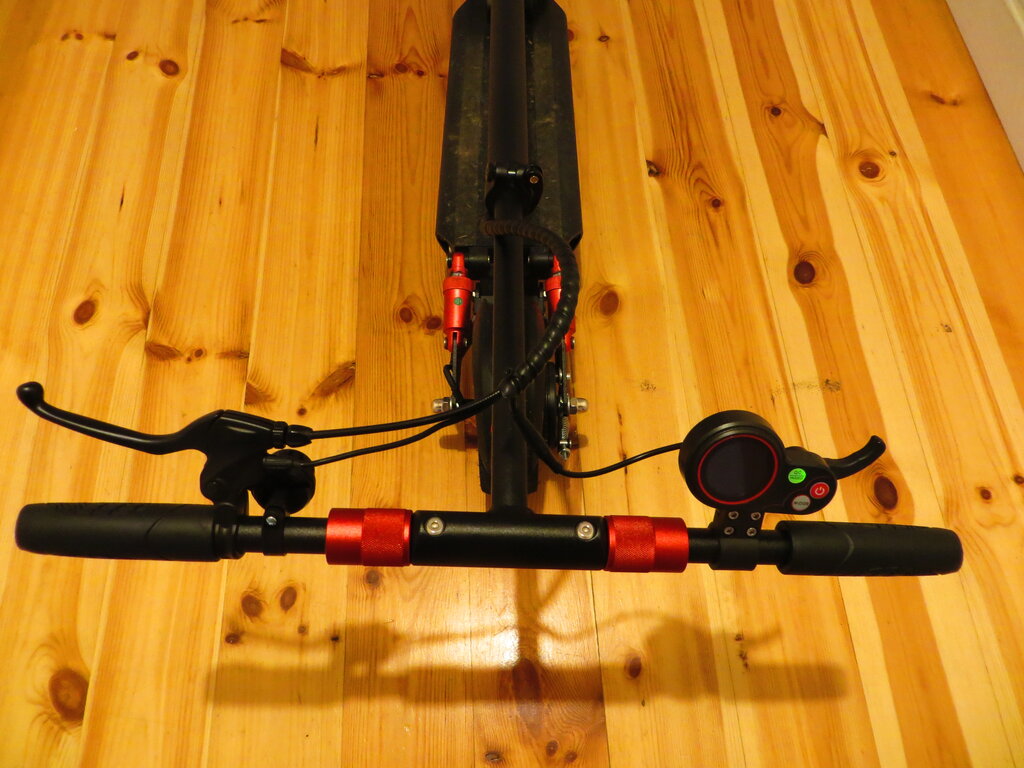
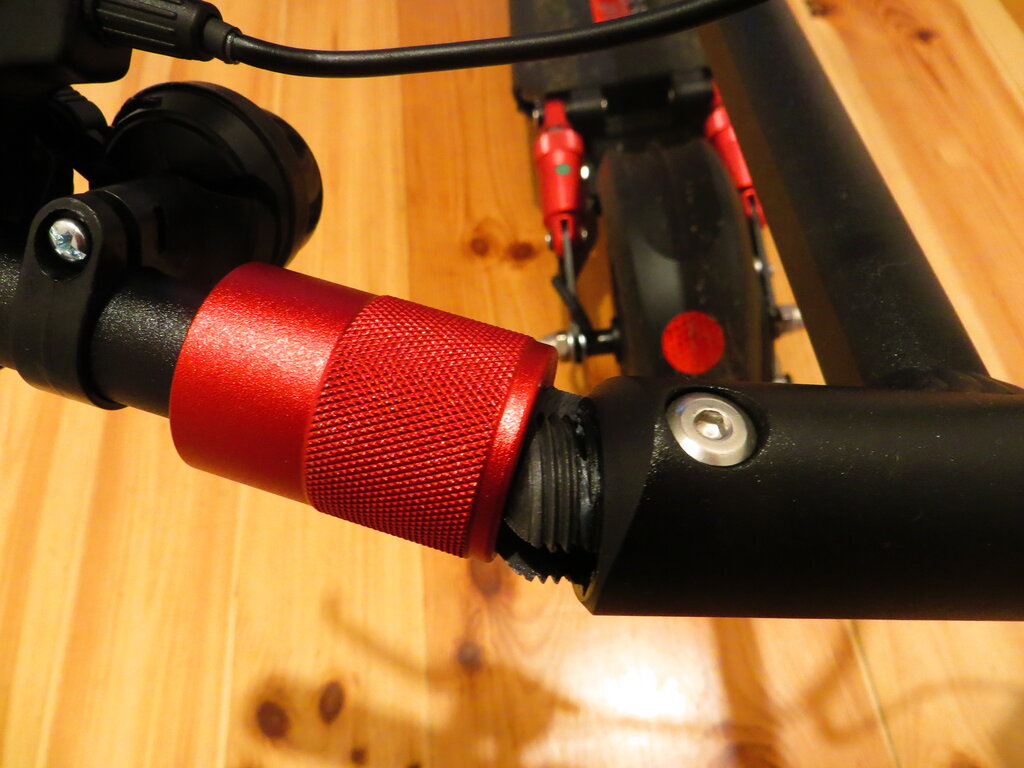
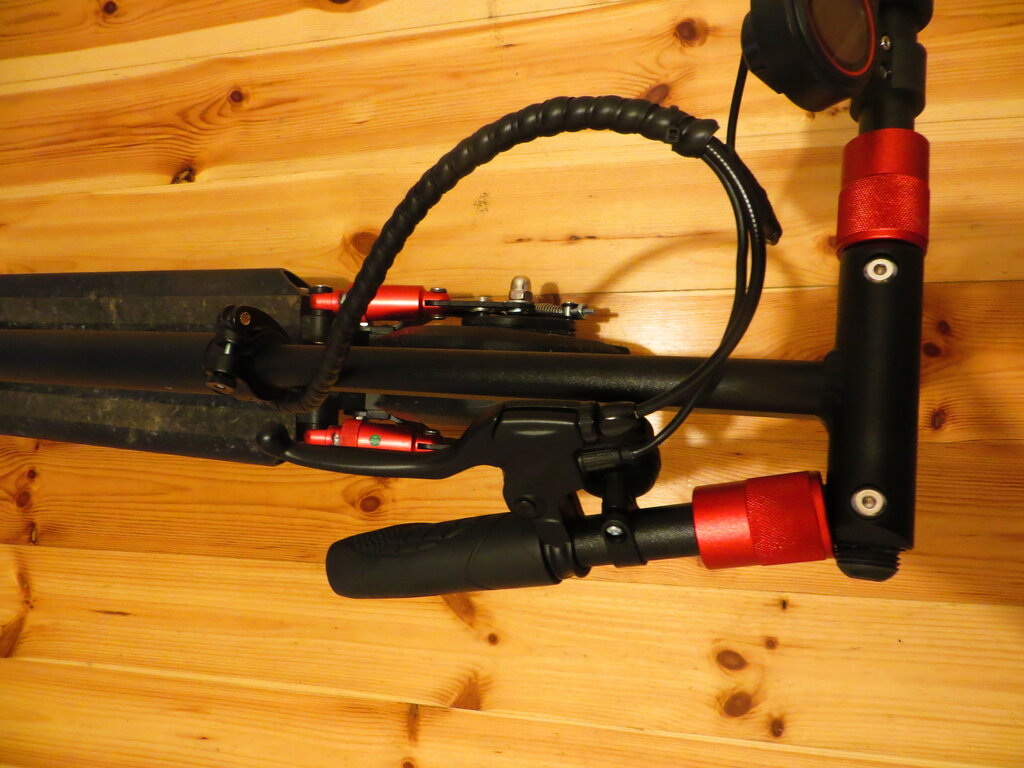
It didn’t feel quite safe to leave it outside when going shopping, and the bike lock I had could only be used to secure a wheel, which is easy to screw off, so I got a dedicated scooter protection in Decathlon. Just like bike locls with steel wire, it can be broken in a few minutes with manual tools, or in seconds with an angle grinder, but it should protect against unprepared opportunists.
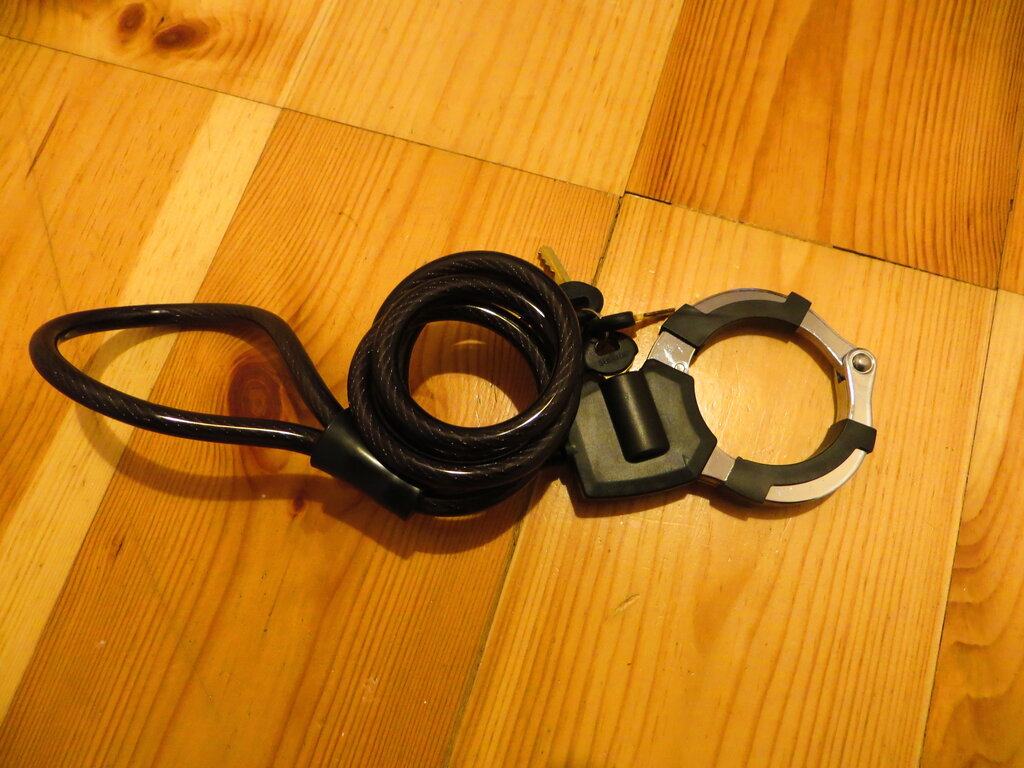
Since I have 12V off-grid solar at home, and I wanted the ability to charge it in car, I have looked into a car charger for the scooter. The battery pack is 42V, which is 10 18650 Li-Ion batteries connected in series (“10S” setup) and the maximum charge current is 1.5A. I’ve found a charger on Amazon, but it was 2A and I didn’t want to test if the built-in battery BMS will do its own current limiting. So I’ve bought a step-up converter with current limiting, and with voltage going up to 72V (when I was playing with it, it generated enough power to light a 200W 230V incandestent light bulb).
Then I’ve purchased a plug that matches the socket in the scooter’s battery. The plug you’re looking for is 3-pin GX-16. There are multiple variants of GX-16 and you’re looking for the 3-pin one, they’re pretty easy to obtain. I also learned they’re called “aviation connectors”. The positive battery terminal is connected to pin #1 and negative is pin #3. The “16” in GX-16 is its diameter, by the way.
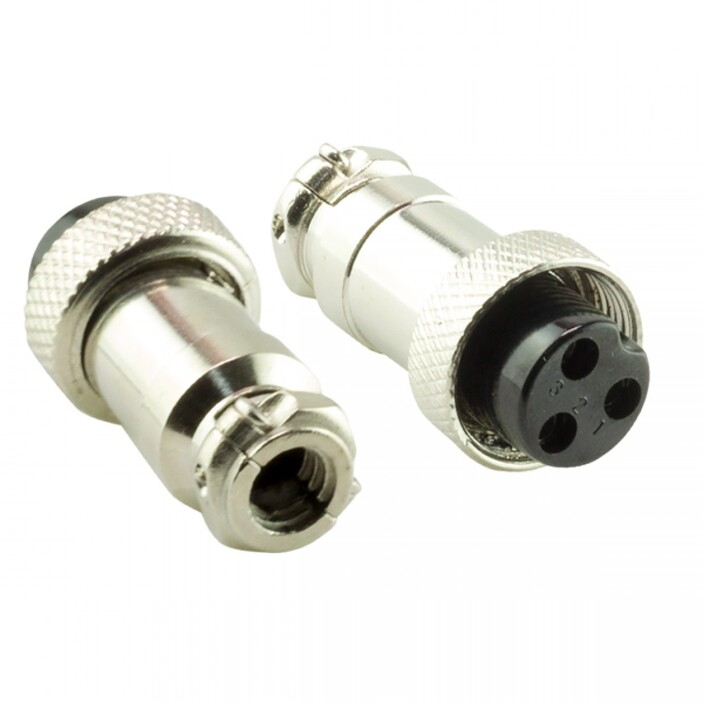
I’ve measured the exact output of the scooter’s 230V charger, it produced 41.9V and that’s how I tuned the step-up converter. In the step-up, there should be two potentiometers (variable resistors), one for tuning voltage and one for tuning current. The voltage one may be marked with V or U, and the current one with something like I or Curr. Anyway, the way you tune it is: the I should be at maximum setting, which is usually how it comes out of the factory. Then you plug a voltometer (multimeter set to DC voltage measurement in a 200V range) to the step up output and turn the voltage potentiometer until you get 41.9V. Then comes the tricky part, you need to find a suitable load. I’ve had a variable 100W 51Ω resistor but you may use 3 or 4 200W incandestent light bulbs connected in parallel instead.
Anyway, the procedure for tuning the current limiting part of the step-up converter is: you disconnect your voltage meter. You set it to DC current measurement mode. Most likely it has a separate input for measuring 10A or 20A current, and that’s what you’re going to want to use. You connect: (-) of the step-up output - (-) of the amp meter - (+) of the amp meter - load - (+) of the step-up output. Now you read the amp meter output and dial the current limiting potentiometer until you get 1.5A or less (less is slower charging but longer battery life). WARNING: your load may get hot. Your wires may also get hot if they aren’t thick enough - if you see any smoke, turn off power immediately, it’s probably the wire insulation burning.
Contact: scootinkerer@tilde.club
